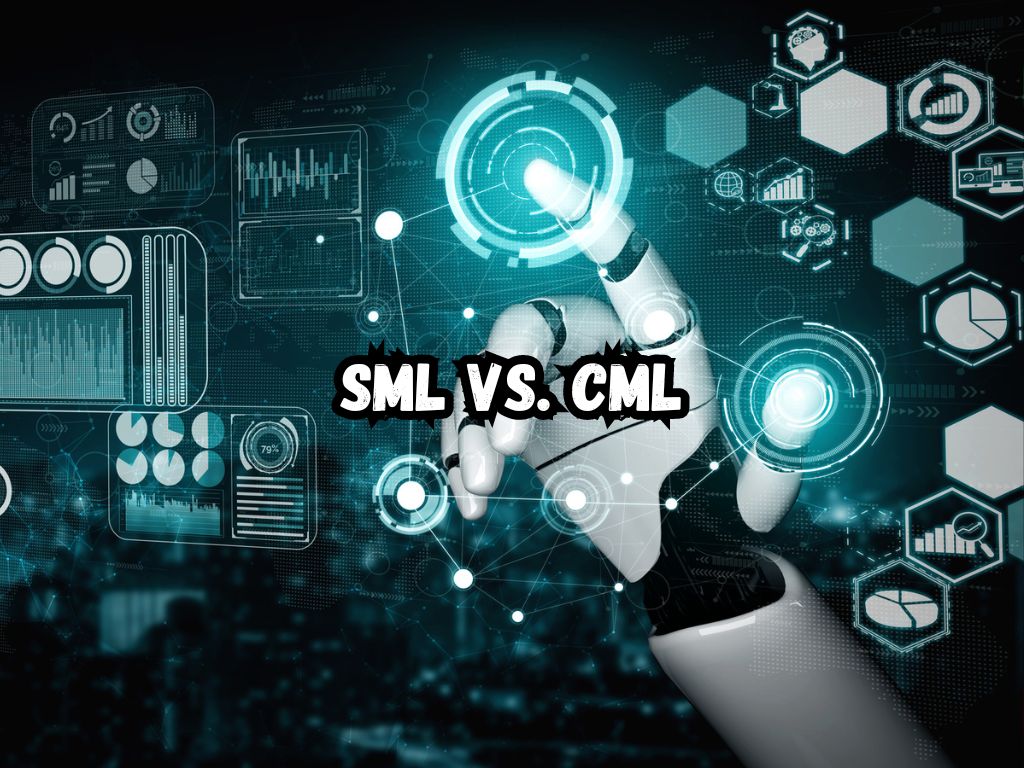In the unfolding realm of artificial intelligence (AI) and data science, understanding the myriad of methodologies used to interpret and analyze data is crucial.
Among these methodologies, Statistical Machine Learning (SML) and Classical Machine Learning (CML) stand out due to their distinctive approaches and applications.
This article aims to dissect SML vs CML differences, offering insights into their background, theoretical foundations, and practical considerations, thereby guiding the selection of appropriate techniques for various AI projects.
Historical Background and Evolution
The journey of machine learning begins in the corridors of early computer science, where the ambition to create adaptable machines first took shape. This vision birthed Classical Machine Learning, characterized by its rule-based algorithms, meticulously crafted by hand.
As the digital age unfolded, bringing with it an explosion of data and an upsurge in computational capabilities, Statistical Machine Learning began to gain prominence. This new era called for algorithms capable of sifting through complex datasets, deriving predictions grounded in statistical analysis.

Theoretical Framework
Classical Machine Learning
The foundation of Classical Machine Learning lies in deterministic algorithms—those that perform consistently under the same conditions.
This category includes algorithms like decision trees, which classify data based on clear-cut criteria, and support vector machines that segregate data points by determining an optimal dividing line.
Statistical Machine Learning
Statistical Machine Learning, on the other hand, operates on the realm of probabilities. It seeks to uncover the statistical underpinnings within data.
Bayesian Networks, for example, anticipate outcomes by analyzing the likelihood of various scenarios, while regression analysis uncovers relationships between variables through statistical functions.
SML vs CML: Key Differences
Diving deeper, several fundamental differences between the two approaches emerge. The deterministic nature of CML contrasts with SML’s probabilistic backbone.
While CML algorithms guarantee uniform outcomes with identical inputs, SML algorithms thrive on randomness, embracing the variability inherent in data.
The data landscape each method navigates further accentuates their disparities. CML can often operate on smaller datasets with minimal pre-processing. In contrast, SML demands extensive datasets to model complex statistical relationships accurately.
Another area of divergence lies in their predictive abilities and complexity. SML models generally boast superior predictive accuracy, capable of untangling intricate data patterns at the expense of increased computational load.
Meanwhile, CML models, with their straightforward algorithms, tend to be more comprehensible, though they might lag in predictive performance when faced with complex scenarios.

Pros and Cons
Each technique carries its set of advantages and limitations. The simplicity and interpretability of CML appeal to those seeking algorithms that are easy to understand and debug.
SML, with its intricate modeling capabilities, excels in scenarios laden with high-dimensional data, offering nuanced insights despite its complexity.
However, these strengths come with trade-offs. CML might falter in the face of large-scale data or complex patterns, while SML’s computational demands and dependency on substantial data quantities represent significant hurdles.
Practical Considerations
Choosing between SML and CML involves a careful evaluation of project-specific factors—data characteristics, problem complexity, desired accuracy, computational resources, and time constraints all play a role in steering this decision.
Future Directions
The horizon of machine learning is rapidly shifting, with breakthroughs that blur the lines between SML and CML. Anticipation surrounds hybrid models that merge deterministic rules with statistical analysis, offering a balanced approach to complex problem-solving.
Efforts to enhance the interpretability of SML models further promise to widen their applicability across various sectors.
Frequently Asked Questions
What is the main difference between Statistical Machine Learning and Classical Machine Learning?
The core difference lies in their foundational approaches: Classical Machine Learning is based on deterministic algorithms, while Statistical Machine Learning relies on probabilistic models to interpret data.
Can Classical Machine Learning techniques still compete with modern Statistical approaches?
Absolutely. Despite the advancements in SML, CML remains valuable, especially in projects where simplicity, speed, and interpretability are priorities.
How do the data requirements differ between SML and CML?
CML can often work with smaller datasets and may require less pre-processing, whereas SML typically demands larger datasets to accurately map complex statistical relationships.
Which approach is more suitable for small data sets?
CML is generally more suited for smaller datasets due to its simpler models and lower data requirements.
How do developments in AI and machine learning technologies affect the relevancy of SML and CML?
Advancements in technology tend to enrich both SML and CML, driving towards more sophisticated, hybrid models. Continuous innovation ensures that both approaches remain relevant, adapting to new challenges and complexities in data science.
Navigating the intricate web of AI and machine learning requires a keen understanding of the tools and methodologies at our disposal.
As this article has highlighted, both Statistical and Classical Machine Learning have their unique strengths and areas of application.
The choice between them hinges on a multitude of factors, underscoring the importance of a nuanced approach in leveraging technology to unravel the complexities of data.
Conclusion
To navigate the intricate landscape of AI and machine learning, a deep understanding of both Statistical and Classical Machine Learning is essential.
Each possesses unique strengths suitable for different types of tasks. As the field evolves, embracing the synergies between SML and CML will be key to unlocking new frontiers in intelligent data analysis.


 Tags:
Tags:










